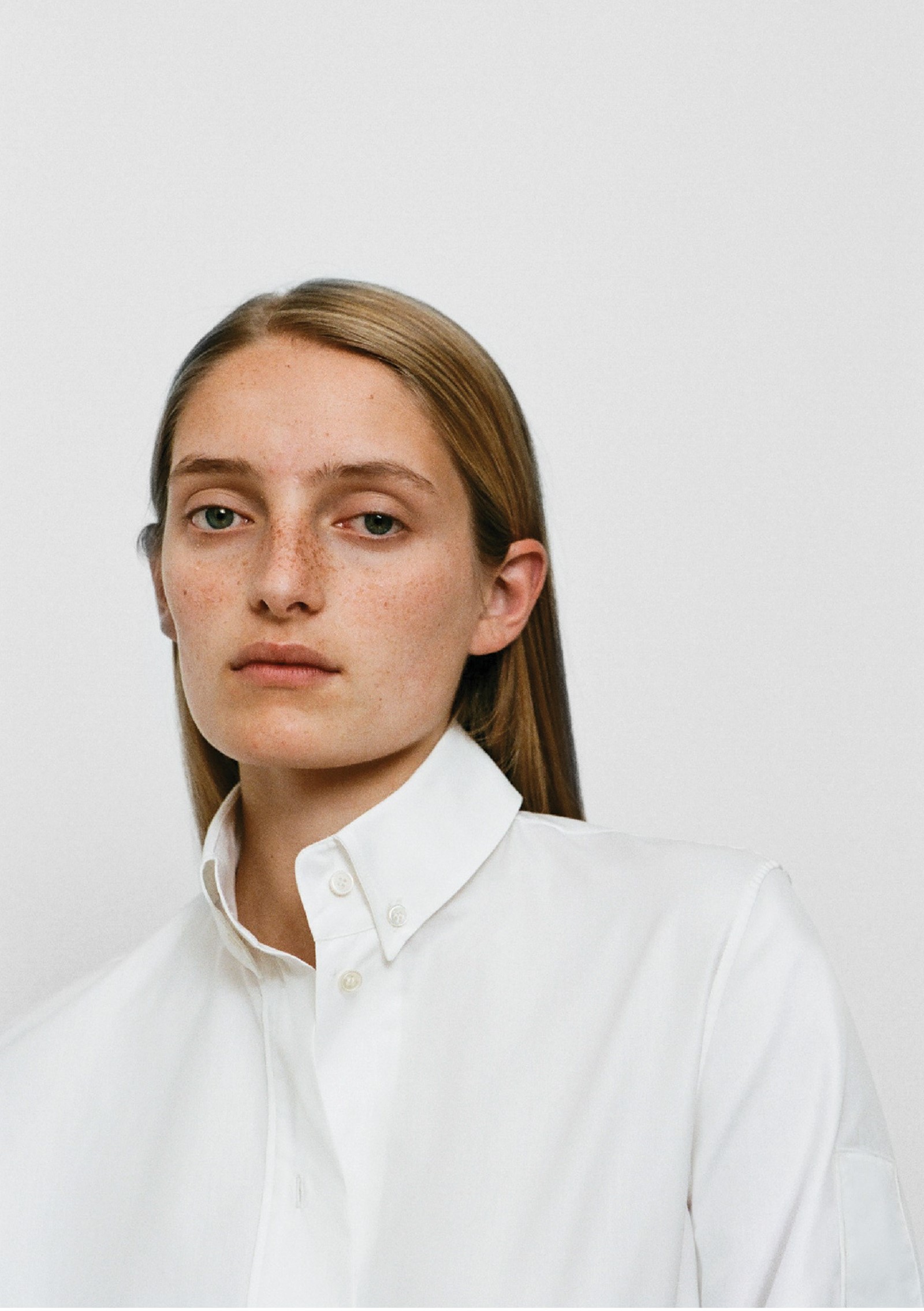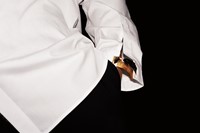AnOther has partnered with 1 Granary to create a series of Emerging Talent pieces, celebrating some of the most exciting upcoming creatives working in fashion design today.
“Isn’t it crazy how much time it takes to make one shirt?” says Christel Bibi Blangsted, while cutting the binding for a cuff placket. “Some people believe you can do it in six hours, but it actually takes days.” Or, in the case of Blangsted, more than six months of development – but without the appearance of over-development in the final product. We sit in the north London garden shed that functions as her studio, and with a soft yet clear voice she explains what’s behind her new project. On the floor appears many a scrap of pattern paper; at the back, a telescope looking out of the window; next to the wall, a closet full of white shirts. The sound of scissors accompanies the talking. Blangsted leans over the table, strands of blonde hair drop down, framing her face. The Danish designer trained under the sharp eye of Louise Wilson, the late MA Fashion course director of Central Saint Martins, and worked for luxury brands such as Ann Demeulemeester and Acne Studios, honing her skills before deciding to start a label of her own, Bibi Blangsted, solely focusing on luxury shirting for women – at least, for now.
“The shirt for me is the most interesting garment,” she starts, moving across the room to turn down the radio. “It is so essential and yet it translates a variety of emotions: sensuality, discipline, control… It is hard as a woman to find a good shirt – one that allows you to use it as it was designed. At least, that is what I have found when doing them for other brands: I have had to convert them into something different. You will see a shirt everywhere you travel – it’s quite reliable, really – and yet it is often the item which is just made at the end of a collection, in a poplin that won’t last long, to tick merchandising boxes.
“I believe in a few good things: essentials,” she continues. “I don’t really like decorations as I feel they are just add-ons, for various effects. They are not needed and stand in the way of the form. Like clutter, you don’t need it.” Her Scandinavian upbringing has been rather vital in her design philosophy, she thinks, having come of age surrounded by beautifully crafted practical objects. “Carved down to the essence of form,” Blangsted notes. “A well-designed garment actually needs to have some sort of intelligence – and it really bloody should have, because someone has chosen to make it and spend hours developing and perfecting. Yohji Yamamoto once said that you should be able to see the hands of the creator in a garment, and I think this is very true. Or if not the hands, then at least the intention. If it doesn’t have an intention, then why spend all that time making it?”
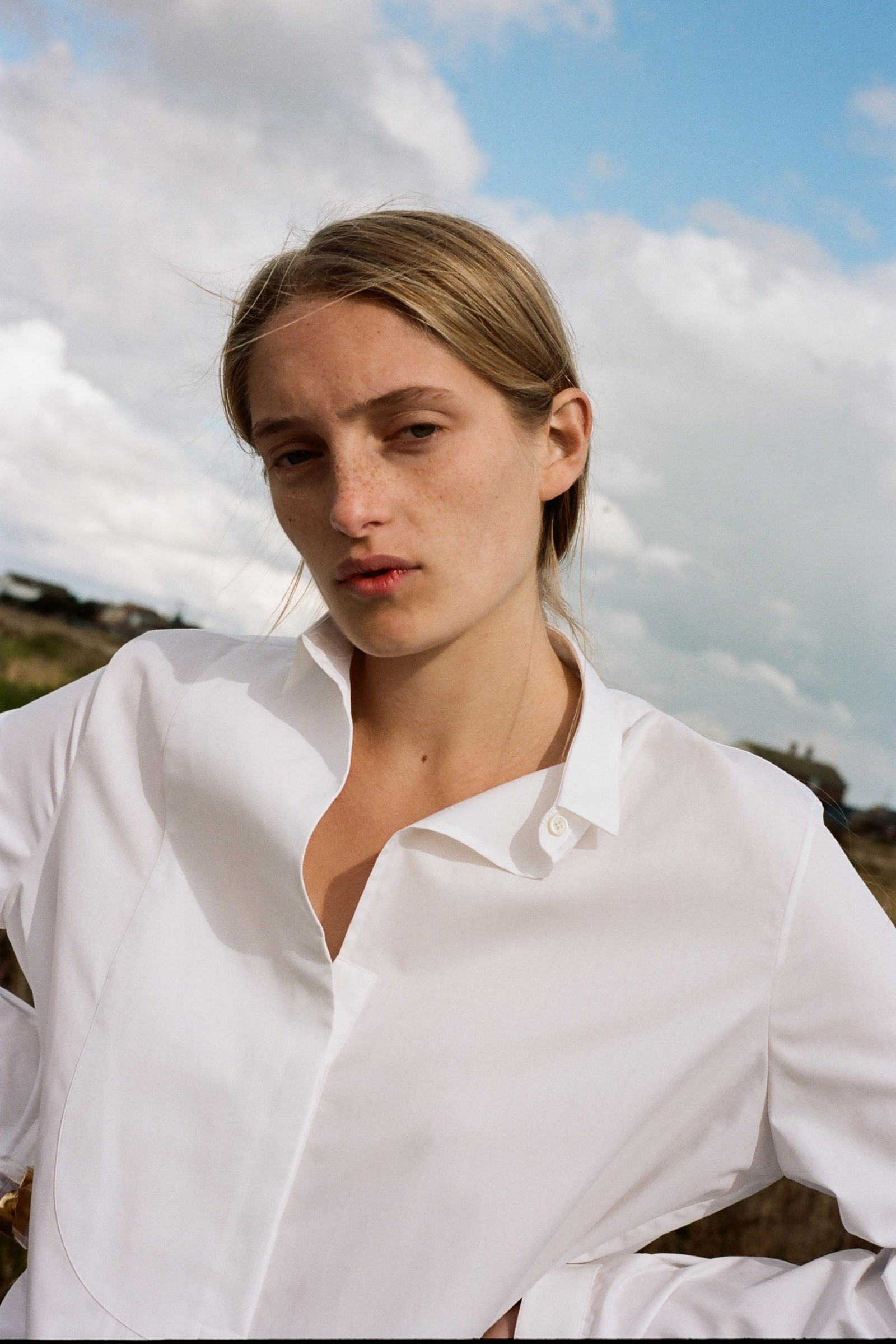
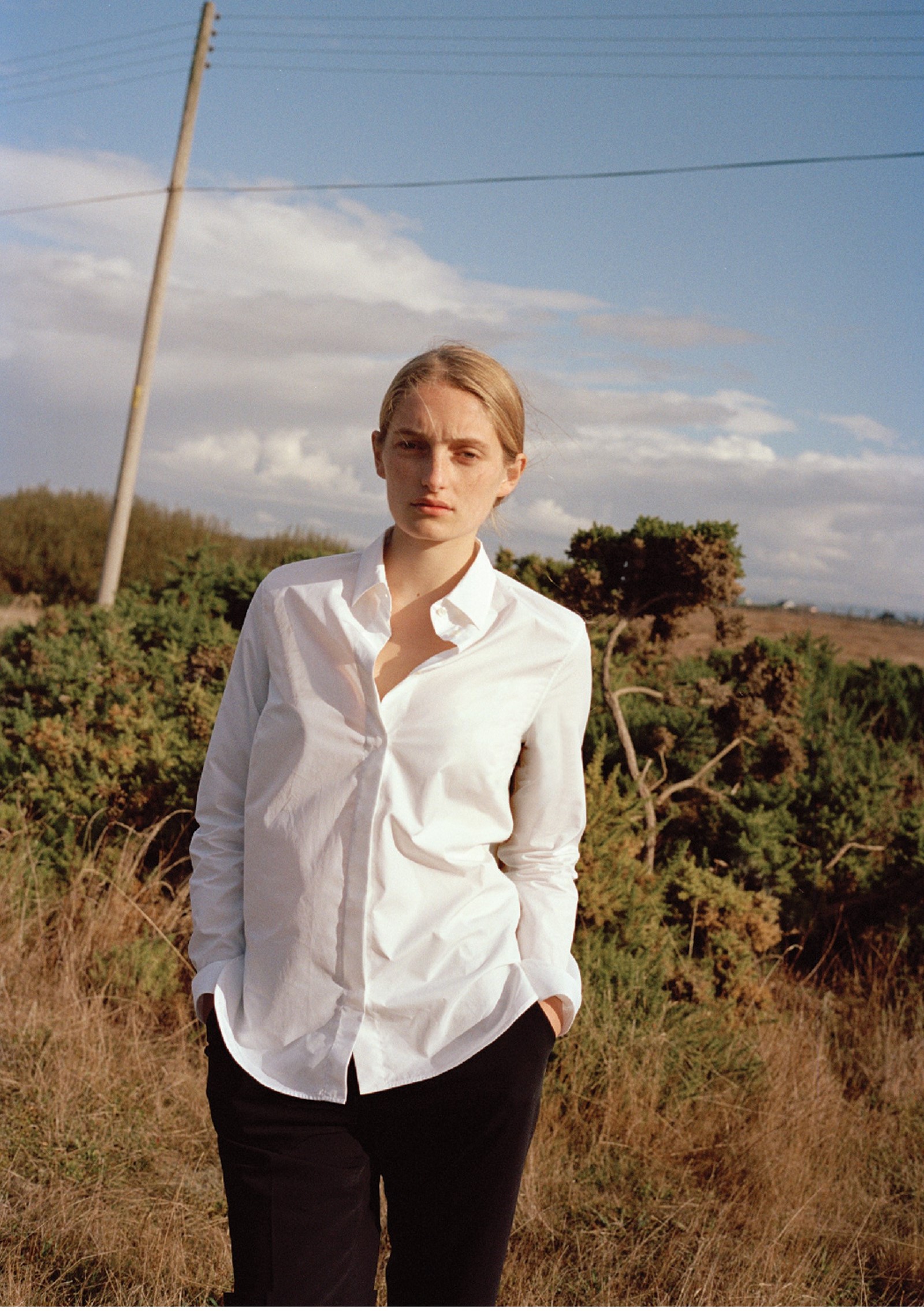
The result is a reinvention of the simplicity of form: redefining function through interactions between precious metals such as gold, rhodium and titanium, with the most luxurious Swiss poplin – a concept that’s actually never been executed before. The jewellery is key to the shirts, which come only in a variety of three non-seasonal styles – the former made in a London-based atelier, the latter in a small Italian factory. The touch of them on skin is crisp and delicate, yet its intention is to become lived-in, and to be lived with. “I wanted it to be special – completely special – and to last me for years and years,” Blangsted muses. “It’s like having a dog really, a reliable good friend.”
Her liking for timeless design, like a Wegner chair or a desk by Kai Kristiansen, is perhaps part of what makes Blangsted want to make worthwhile pieces which last – moving away from that which dominates fashion discourse: the mayhem of endless seasonal and pre-seasonal collections produced by leading brands. “The attention span of an object which has to live in a commercial cycle is very different from that of an object which inhabits the world in a different timeframe, both in terms of the attention it’s given and its longevity,” said curator Neville Wakefield recently in an issue of 032c which paid tribute to Helmut Lang (one of Blangsted’s all-time heroes, alongside Jil Sander). Wakefield’s remark resonates with Blangsted, although she argues that some things start out in a commercial world, and end up outliving it. “If I relate it to furniture – most if not all the greatest chair designs have been done with the intention of them surpassing the affections of the season, but you never know if this will happen for sure – so it’s relative and it still has to earn its place a little.”
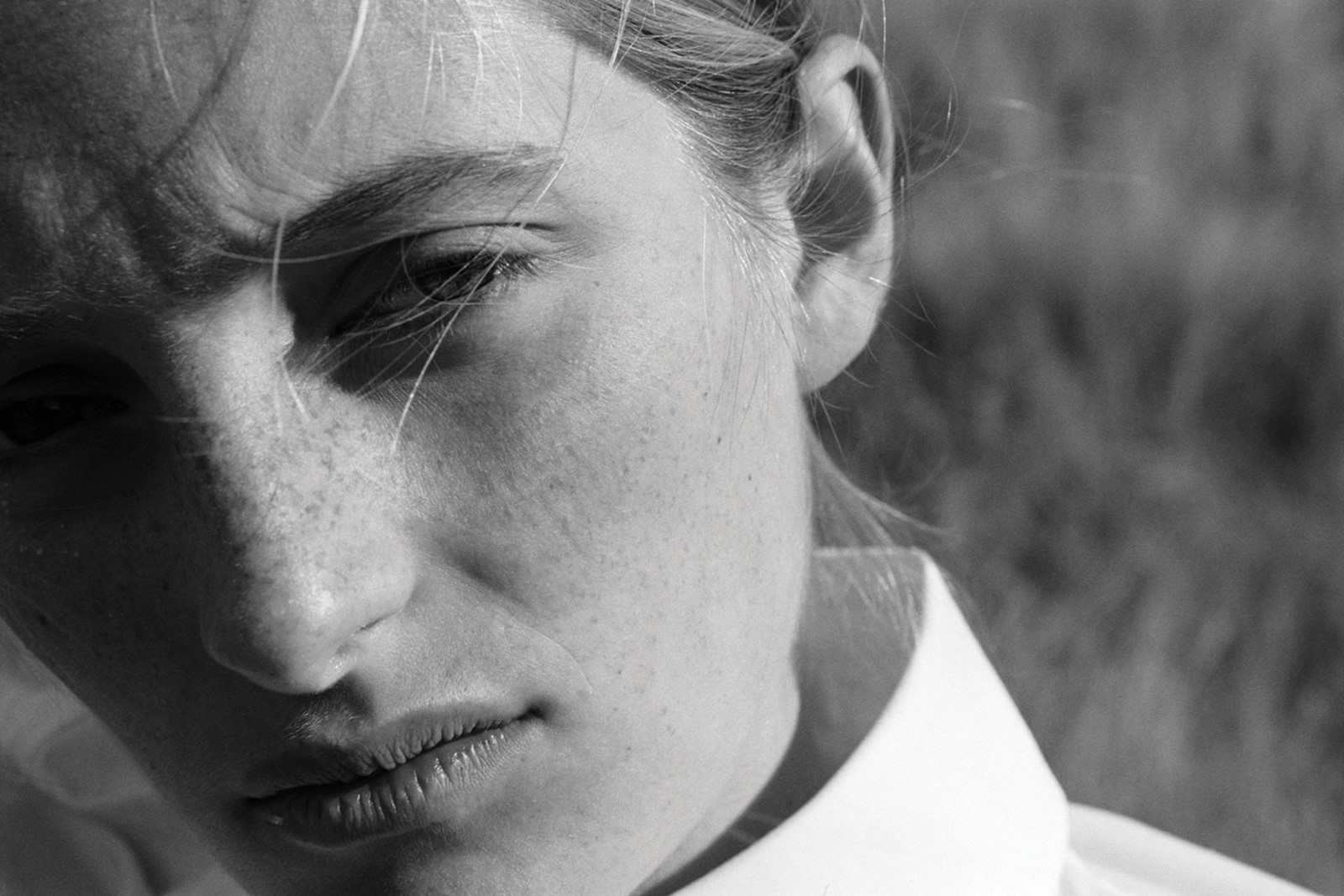
Blangsted keeps it cool, a serious look on her face in this cold shed, bringing the task to completion. She takes a few pins out of a box and motions me to the cutting table. “A pattern for a shirt – or anything really – has to look good,” she explains. “The lines have to be smooth and the joints have to be angled correctly – otherwise it pulls and you will be caught in a mess of tensions. The stitch has to be accurate, the fabric the right weight. All these things have to be right.”
Three delicate white objects, stripped back to their core, feel quite necessary in an age when men’s shirting seems to have reached perfection, yet the feminine counterpart is still found lacking. Distilled and pure, Bibi Blangsted offers that sense of longevity and quality the industry is looking for. To ‘let a shirt be a shirt’ is a design philosophy to make one reconsider one’s values, something much needed in the current tumultuous international climate we find ourselves in. Bibi Blangsted proposes to return to what’s essential, and start anew.
Hair Hirokazu EnDo; Model Minna Griffiths at Select and Martyne Smith
